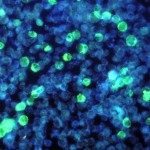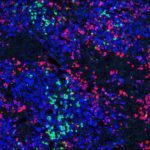Link to Pubmed [PMID] – 20301097
Hepatology 2010 May;51(5):1754-65
UNLABELLED: Generation of hepatocytes from human embryonic stem cells (hESCs) could represent an advantageous source of cells for cell therapy approaches as an alternative to orthotopic liver transplantation. However, the generation of differentiated hepatocytes from hESCs remains a major challenge, especially using a method compatible with clinical applications. We report a novel approach to differentiate hESCs into functional hepatic cells using fully defined culture conditions, which recapitulate essential stages of liver development. hESCs were first differentiated into a homogenous population of endoderm cells using a combination of activin, fibroblast growth factor 2, and bone morphogenetic protein 4 together with phosphoinositide 3-kinase inhibition. The endoderm cells were then induced to differentiate further into hepatic progenitors using fibroblast growth factor 10, retinoic acid, and an inhibitor of activin/nodal receptor. After further maturation, these cells expressed markers of mature hepatocytes, including asialoglycoprotein receptor, tyrosine aminotransferase, alpha1-antitrypsin, Cyp7A1, and hepatic transcription factors such as hepatocyte nuclear factors 4alpha and 6. Furthermore, the cells generated under these conditions exhibited hepatic functions in vitro, including glycogen storage, cytochrome activity, and low-density lipoprotein uptake. After transduction with a green fluorescent protein-expressing lentivector and transplantation into immunodeficient uPA transgenic mice, differentiated cells engrafted into the liver, grew, and expressed human albumin and alpha1-antitrypsin as well as green fluorescent protein for at least 8 weeks. In addition, we showed that hepatic cells could be generated from human-induced pluripotent cells derived from reprogrammed fibroblasts, demonstrating the efficacy of this approach with pluripotent stem cells of diverse origins.
CONCLUSION: We have developed a robust and efficient method to differentiate pluripotent stem cells into hepatic cells, which exhibit characteristics of human hepatocytes. Our approach should facilitate the development of clinical grade hepatocytes for transplantation and for research on drug discovery.

